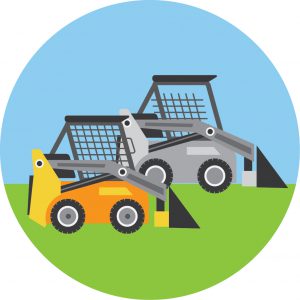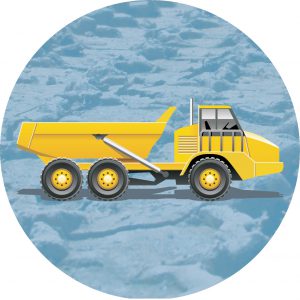
Why You Should Integrate Rental Equipment into Your Fleet Management Processes
Rental equipment is nothing new in the construction industry. Contractors have rented machines from time to time, usually when specialized equipment is needed for a particular job or when a fleet machine is down for service or repairs. In recent years, though, contractors have taken a new approach to renting, using is as a financial tool to increase profitability as well as on-the-job productivity. That requires a new approach to fleet management, too.

Rental equipment cannot make operations more efficient – or cost-efficient – unless the costs are integrated strategically into the overall fleet management process. As a dealer, you serve as an advisor to customers. You also provide the rentals they now depend on to bid and complete jobs. You’re in an ideal position to help customers understand the “why and how” when it comes to integrating rental equipment into their fleet management processes.
Experts suggest dividing rental equipment into three usage categories:
- Utility – these are support units such as pumps, aerial lift platforms, DEF tanks, variable message boards and so on
- Standard – the bulk of the fleet, machines which your customer regularly assigns to jobs using set rates as well as established policies and procedures
- Specialized – machines, attachments, etc. that perform specific types of work and are not used on a regular basis

- How to account for equipment cost when you’re estimating jobs
- Job site responsibilities regarding rentals
- Who is responsible for financial details
Here’s how that plays out.
Utility equipment
Contractors often rent these things as needed. Or, if they own the equipment, they charge it off to job sites by the week or month. For estimating, the cost would be considered part of the site’s indirect or crew costs. For best integration, your customer’s internal rental rate should be the same as what they would pay your dealership for the rental. This keeps internal costs “honest,” and it makes it easy for contractors to assess cost-effectiveness of rentals in this category.
Each job site using utility equipment should be responsible for making rental arrangements, approving and paying invoices, and managing any risks associated with the equipment.

Your customers rarely rent equipment in this category, except to meet peak demands. For estimating and job site management purposes, rental equipment costs should be treated just the same as for company-owned machine. The “office,” not a specific job site, should be responsible for making rental arrangements, approving and paying invoices, etc. Costs should be attributed to the general equipment account.
Specialized equipment
Depending on individual job requirements, contractors sometimes need specialty equipment for drilling, lifting, or other “one off” tasks. Your customer may own some of these assets, if they use them often enough, but most contractors have switched to using rental equipment for specialty work. For estimating, it is critical to identify which equipment will be need, when and for how long, and to confirm its availability.
The bottom line
Integrating rental equipment into the fleet management process can reduce costs, by helping customers conserve working capital and by promoting greater jobsite efficiency. After all, if you’re paying out of pocket for rentals, you don’t want them sitting around idle.

Better coordination of rentals and fleet machines makes a lot of sense – practically and economically. But you can’t maintain projected productivity is machines break down. Downtime and the cost of repairs can kill a job’s profitability. That’s why our team here at ADI has developed a series of products to protect both rental and fleet equipment.
With our combined expertise in the construction and insurance industries, we know what dealerships and customers need most. So we offer the following:
- Extended warranty options to protect machines once original coverage runs out. Seamless service coverage provides practical benefits, but it also gives customers peace of mind knowing they can continue to rely on their equipment when they need it.
- Warranty Connect software – proprietary, easy-to-use technology that gives customers a single location to store and manage machine-specific documents and claims information while linking them with your dealership and OEMs.
- Loss damage waivers for rental machines.
- Physical damage insurance for rental machines.
All these products offer double benefits: they give your dealership more ways to assist and support your customers, and they give your dealership new sources of revenue.


